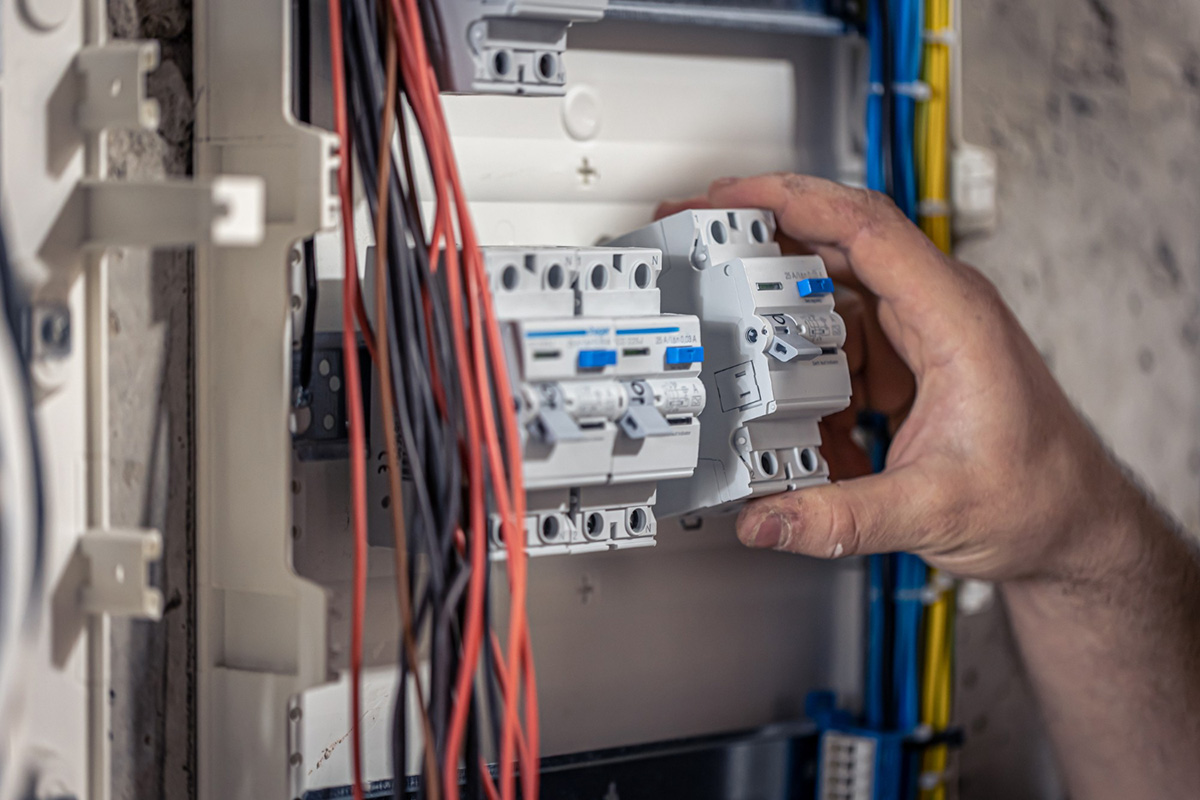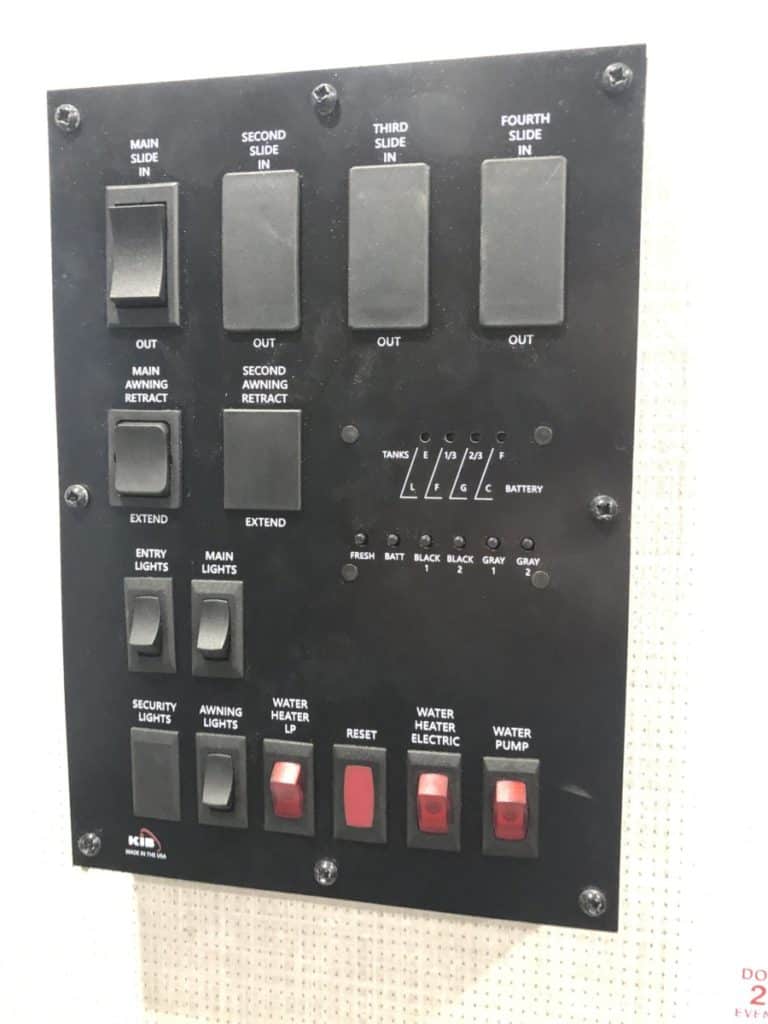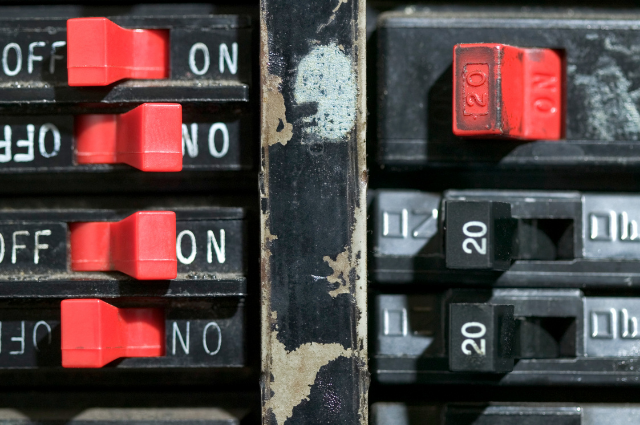Living Room Circuit Breaker Keeps Tripping: Common Causes and Solutions
If you've ever experienced a tripping living room circuit breaker, you know how frustrating it can be. Suddenly, all the lights and appliances in your living room go out and you're left in the dark. Not only is it inconvenient, but it can also be a safety hazard. But don't worry, you're not alone. This is a common issue that many homeowners face. In this article, we'll explore the possible causes of a tripping living room circuit breaker and provide solutions to help you fix the problem.
How to Troubleshoot a Tripping Living Room Circuit Breaker
Before we dive into the potential causes of a tripping living room circuit breaker, it's important to know how to troubleshoot the issue. The first step is to locate your circuit breaker panel. It's usually found in the basement, garage, or utility room. Once you've located the panel, check if the tripped breaker has moved to the "off" position. If so, simply flip it back to the "on" position. If the breaker trips again immediately, it's a sign of a bigger problem.
5 Possible Reasons Why Your Living Room Circuit Breaker Keeps Tripping
Now that you know how to troubleshoot a tripping living room circuit breaker, let's explore the potential causes:
Faulty Wiring: One of the most common reasons for a tripping circuit breaker is faulty wiring. This could be due to old or damaged wiring, loose connections, or improper installation. It's important to have a professional electrician inspect and repair any faulty wiring to prevent potential hazards.
Overloaded Circuit: Your living room circuit may be overloaded with too many appliances and devices plugged in at once. This can cause the circuit to trip as it's unable to handle the electrical load. To prevent this, try unplugging unnecessary devices and distribute the load evenly among different circuits in your house.
Short Circuit: A short circuit occurs when a hot wire comes into contact with a neutral wire or ground wire, causing a sudden surge of electricity. This can trip your circuit breaker and should be addressed immediately by a professional electrician.
Faulty Appliance: If the circuit only trips when a specific appliance is plugged in, it could be a sign of a faulty appliance. Try unplugging the appliance and see if the circuit still trips. If it doesn't, the appliance may need to be repaired or replaced.
Ground Fault: A ground fault occurs when a hot wire comes into contact with a metal junction box or a grounded surface. This can cause a circuit to trip and should be addressed by a professional electrician.
Understanding the Electrical Load on Your Living Room Circuit
To prevent a tripping living room circuit breaker, it's important to understand the electrical load on your circuit. The electrical load refers to the amount of electricity that is being used by all the devices and appliances connected to the circuit. Each circuit has a maximum load capacity, and exceeding this limit can cause the circuit to trip. It's important to know the maximum load capacity of your living room circuit and distribute the load accordingly.
How to Fix a Tripping Living Room Circuit Breaker
If your living room circuit breaker keeps tripping, here are some steps you can take to fix the problem:
Step 1: Identify the cause: First, try to identify the cause of the tripped circuit. Is it due to an overloaded circuit, a faulty appliance, or a ground fault?
Step 2: Distribute the load: If the circuit is overloaded, try unplugging unnecessary devices and distribute the load evenly among different circuits in your house.
Step 3: Check for faulty appliances: If the circuit only trips when a specific appliance is plugged in, it could be a sign of a faulty appliance. Try unplugging the appliance and see if the circuit still trips.
Step 4: Call a professional: If the issue persists, it's best to call a professional electrician to inspect and repair any faulty wiring or electrical issues.
Signs of an Overloaded Living Room Circuit
To prevent a tripping living room circuit breaker, it's important to know the signs of an overloaded circuit. These may include flickering lights, buzzing outlets, and warm electrical outlets or switches. If you notice any of these signs, it's important to address the issue before it becomes a bigger problem.
The Importance of Properly Sized Circuit Breakers for Your Living Room
Properly sized circuit breakers are essential for the safety and efficiency of your living room's electrical system. A circuit breaker that is too small for the electrical load can trip frequently, while a breaker that is too large can pose a fire hazard. It's important to have a professional electrician determine the appropriate size for your living room circuit breaker.
How to Identify and Replace a Faulty Living Room Circuit Breaker
If your living room circuit breaker is faulty and needs to be replaced, here are the steps to follow:
Step 1: Turn off the main power: Before replacing a circuit breaker, turn off the main power to your house to prevent any accidents.
Step 2: Remove the panel cover: Unscrew the panel cover and remove it to access the circuit breakers.
Step 3: Identify the faulty breaker: Look for a breaker that is in the "off" position or has a red indicator showing it has tripped.
Step 4: Replace the breaker: If you're not sure how to replace a circuit breaker, it's best to call a professional electrician to ensure it's done safely and correctly.
Preventing Tripped Living Room Circuit Breakers: Tips and Tricks
Here are some tips and tricks to prevent your living room circuit breaker from tripping:
Tip 1: Avoid using extension cords: Extension cords can overload a circuit and increase the risk of a tripping breaker. Instead, use power strips with built-in surge protection.
Tip 2: Unplug appliances when not in use: Unplugging appliances when not in use can help distribute the electrical load and prevent your circuit from tripping.
Tip 3: Don't use too many high-wattage devices at once: High-wattage devices such as air conditioners, heaters, and hair dryers can put a strain on your living room circuit. Try using these devices one at a time to prevent overloading the circuit.
When to Call a Professional Electrician for Living Room Circuit Breaker Issues
If you're experiencing frequent tripped living room circuit breakers or have identified faulty wiring or appliances, it's best to call a professional electrician. Attempting to fix these issues yourself can be dangerous and may cause more harm than good. A licensed electrician will have the knowledge and expertise to properly diagnose and repair any electrical issues in your living room.
In conclusion, a tripping living room circuit breaker can be a common and frustrating issue for homeowners. By understanding the potential causes and taking preventative measures, you can keep your living room circuit functioning properly and safely. If you're unsure or uncomfortable with troubleshooting or fixing the issue yourself, it's always best to call a professional for assistance.
How to Prevent Your Living Room Circuit Breaker from Tripping

Understanding the Cause of Tripped Circuit Breakers
 If you're constantly experiencing a tripped circuit breaker in your living room, you're not alone. This common issue can be frustrating and disruptive to your daily routine. However, before you can effectively prevent your circuit breaker from tripping, it's important to understand why it's happening in the first place. A circuit breaker is a safety device that is designed to protect your home from electrical overloads and short circuits. When too much electricity flows through a circuit, it causes the breaker to trip and shut off the power. This is a safety measure to prevent electrical fires and damage to your home's wiring. So why is your living room circuit breaker tripping? There are several potential reasons, including overloaded circuits, faulty wiring, or a malfunctioning appliance.
If you're constantly experiencing a tripped circuit breaker in your living room, you're not alone. This common issue can be frustrating and disruptive to your daily routine. However, before you can effectively prevent your circuit breaker from tripping, it's important to understand why it's happening in the first place. A circuit breaker is a safety device that is designed to protect your home from electrical overloads and short circuits. When too much electricity flows through a circuit, it causes the breaker to trip and shut off the power. This is a safety measure to prevent electrical fires and damage to your home's wiring. So why is your living room circuit breaker tripping? There are several potential reasons, including overloaded circuits, faulty wiring, or a malfunctioning appliance.
Identifying the Problematic Appliance
 One of the most common causes of a tripped circuit breaker in the living room is an overloaded circuit. This occurs when you have too many appliances or devices plugged into one outlet or circuit, causing it to draw more electricity than it can handle. To prevent this, make sure to spread out your electrical usage among different outlets and circuits. Another potential cause is a faulty or damaged appliance. If your circuit breaker trips when you turn on a specific appliance, it could be an indication that the appliance is drawing too much power or has a short circuit.
Unplug the appliance and have it inspected by a professional to determine the issue and prevent future tripping incidents.
One of the most common causes of a tripped circuit breaker in the living room is an overloaded circuit. This occurs when you have too many appliances or devices plugged into one outlet or circuit, causing it to draw more electricity than it can handle. To prevent this, make sure to spread out your electrical usage among different outlets and circuits. Another potential cause is a faulty or damaged appliance. If your circuit breaker trips when you turn on a specific appliance, it could be an indication that the appliance is drawing too much power or has a short circuit.
Unplug the appliance and have it inspected by a professional to determine the issue and prevent future tripping incidents.
Addressing Electrical Wiring Issues
 In some cases, the cause of a tripped circuit breaker may be due to faulty or outdated wiring in your living room. This is especially common in older homes that may not have been updated to handle modern electrical demands. If you suspect that your wiring is the issue, it's important to have it inspected by a licensed electrician. They can identify any potential hazards and make necessary repairs to ensure the safety and functionality of your living room's electrical system.
In some cases, the cause of a tripped circuit breaker may be due to faulty or outdated wiring in your living room. This is especially common in older homes that may not have been updated to handle modern electrical demands. If you suspect that your wiring is the issue, it's important to have it inspected by a licensed electrician. They can identify any potential hazards and make necessary repairs to ensure the safety and functionality of your living room's electrical system.
Investing in a Whole Home Surge Protector
 If your living room circuit breaker continues to trip despite addressing the above issues, it may be time to consider investing in a whole home surge protector. These devices provide an added layer of protection for your home's electrical system by regulating the amount of electricity that enters your home. This can help prevent overloads and short circuits, reducing the risk of a tripped circuit breaker.
Consult with a qualified electrician to determine the best surge protector for your home and have it professionally installed for optimal protection.
If your living room circuit breaker continues to trip despite addressing the above issues, it may be time to consider investing in a whole home surge protector. These devices provide an added layer of protection for your home's electrical system by regulating the amount of electricity that enters your home. This can help prevent overloads and short circuits, reducing the risk of a tripped circuit breaker.
Consult with a qualified electrician to determine the best surge protector for your home and have it professionally installed for optimal protection.
In Conclusion
 Dealing with a tripped circuit breaker in your living room can be frustrating, but understanding the cause and taking necessary precautions can help prevent future incidents. Spread out your electrical usage, have faulty appliances inspected, address wiring issues, and consider investing in a whole home surge protector for added protection. By taking these steps, you can keep your living room circuit breaker from tripping and maintain a safe and functional electrical system in your home.
Dealing with a tripped circuit breaker in your living room can be frustrating, but understanding the cause and taking necessary precautions can help prevent future incidents. Spread out your electrical usage, have faulty appliances inspected, address wiring issues, and consider investing in a whole home surge protector for added protection. By taking these steps, you can keep your living room circuit breaker from tripping and maintain a safe and functional electrical system in your home.





























:max_bytes(150000):strip_icc()/calculate-electrical-circuit-load-capacity-1152739_final-5bd9c3a746e0fb002d327b0a.png)





























:max_bytes(150000):strip_icc()/living-room-area-rugs-1977221-e10e92b074244eb38400fecb3a77516c.png)






























:max_bytes(150000):strip_icc()/reset-a-tripped-breaker-4134193-04-bc8fad20ca00402889d7cb6619e547fa.jpg)


















